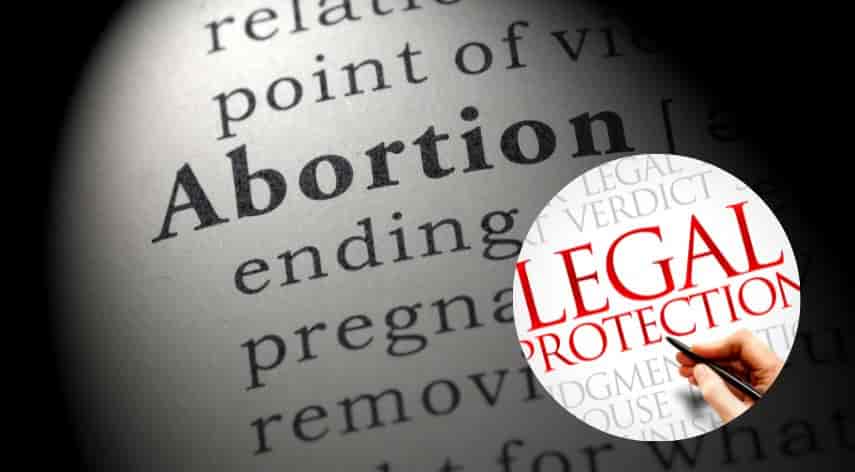The Legal Landscape of Abortion in the United States

Table of Contents
ToggleWhat is the legal landscape of abortion in the United States today?
Abortion has been a controversial issue in the United States for many years, and the legal landscape surrounding it is complex. Currently, abortion is legal in all fifty states, but there are a number of restrictions that vary from state to state. In some states, abortion is only legal in cases of rape, incest, or danger to the life of the mother, while other states have more liberal laws that allow abortion up to the point of viability. There are also a number of requirements that must be met in order for an abortion to be performed, such as mandatory waiting periods and parental consent for minors. As the debate over abortion continues, it is likely that the legal landscape will continue to change.
How did we get to this point, and what challenges does the future hold for abortion rights activists and providers?
How did we get to this point? The history of abortion is long and complex, dating back to ancient times. In the United States, the first laws against abortion were passed in the early 1800s. By the mid-1900s, most states had adopted similar laws banning abortion except in cases where it was necessary to save the life of the woman. However, these laws were largely unenforced. In 1973, the Supreme Court case Roe v. Wade changed everything. The Court ruled that a woman’s right to have an abortion was protected by the Constitution. This ruling led to a sharp increase in the number of abortions performed in the United States. In recent years, there has been a widespread effort to roll back Roe v. Wade and make abortion illegal again. This effort has been successful in some states, but others have reaffirmed their commitment to keeping abortion legal. The future of abortion rights is uncertain, but one thing is clear: the fight is far from over.
What are some of the most important cases in the history of abortion law in America?
One of the most important cases in the history of abortion law in America is Roe v. Wade. The case was decided in 1973 by the Supreme Court, and it essentially legalized abortion nationwide. The court ruled that a woman’s right to privacy extends to her decision to have an abortion and that this right outweighs the state’s interest in protecting fetal life. Since Roe v. Wade was decided, there have been numerous challenges to it, but it has remained the law of the land. Another important case is Planned Parenthood v. Casey, which was decided in 1992. In this case, the Supreme Court upheld Roe v. Wade but said that states could place some restrictions on abortion, as long as those restrictions did not create an undue burden on women seeking abortions. Casey has also been a subject of much debate and has resulted in a number of different interpretations by lower courts. These two cases are just a few of the most important examples of how abortion law has developed in America.
What implications could a Trump presidency have on access to abortions for American women?
There is no doubt that abortion access in the United States would be greatly restricted under a Trump presidency. Trump has stated repeatedly that he would appoint Supreme Court justices who would overturn Roe v. Wade, the landmark decision that legalized abortion nationwide. If Roe were overturned, abortion would once again become a state-by-state issue, and many women would find themselves living in states where abortion was inaccessible or outright illegal. In addition, Trump has proposed defunding Planned Parenthood, which provides abortion services as well as a range of other vital healthcare services for women. This would have a major impact on abortion access, as well as on the overall health of American women. Trump’s policies would undoubtedly make it harder for women to get abortions and could have potentially devastating consequences for those who need them.
Are there any other countries that provide a better model for protecting reproductive rights than the United States currently?
There is no perfect model for protecting reproductive rights, but some countries offer a more robust set of protections than the United States does currently. For example, many European countries have much longer waiting periods for abortions than the United States does, meaning that women have more time to make a decision about whether or not to proceed with the procedure.
In addition, these countries often provide more financial support for women who choose to carry their pregnancies to term, making it easier for them to access the resources they need. Finally, many European countries have laws that protect abortion providers from harassment and violence, something that is sorely lacking in the United States. While no country has perfectly implemented reproductive rights protections, there are definitely some places that are doing a better job than the United States currently.
The landscape of abortion law in the United States is a complex and ever-changing one. In order to provide a full overview of the current legal situation, we looked at some of the most important cases in history and explored how a Trump presidency could impact access to abortions for American women. While there are other countries that provide a better model for protecting reproductive rights than the United States does currently, it is important to remember that progress is always possible with a concerted effort from activists and providers alike.
Alfred Williams, a distinguished business writer, navigates the corporate landscape with finesse. His articles offer invaluable insights into the dynamic world of business. Alfred's expertise shines, providing readers with a trustworthy guide through the complexities of modern commerce.
Recommended For You
Spread the loveCreating a well-designed and functional website starts long before coding begins. The prototyping phase is a critical step
Spread the loveTrade Shows are one of the most competitive environments for businesses to showcase their products and services. With
Spread the loveAudio-visual (AV) equipment plays a crucial role in ensuring the success of your event, whether it’s a corporate





